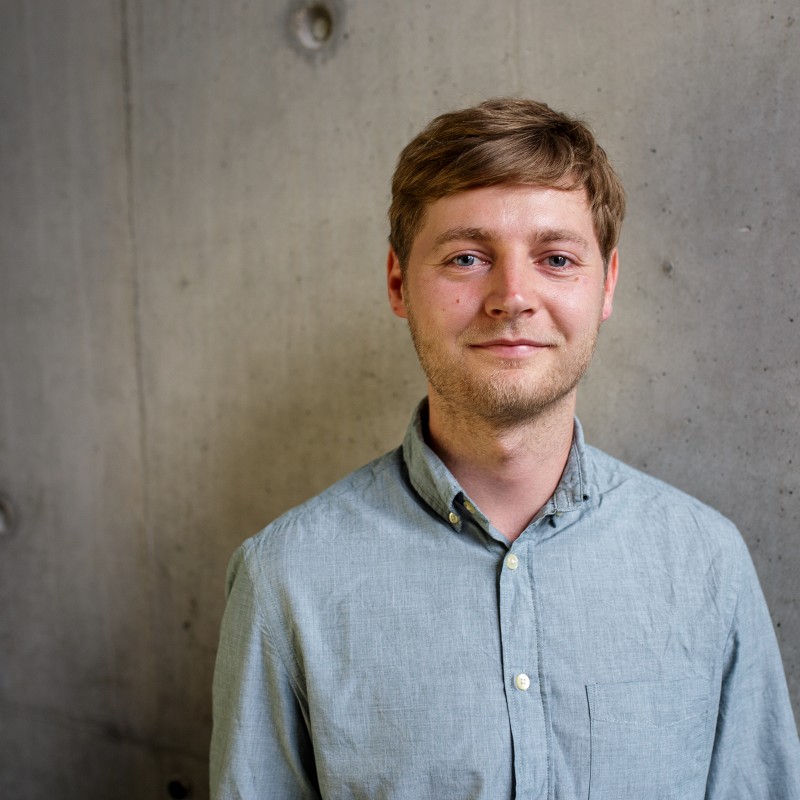anvajo: Thank you very much for taking the time for this interview. Can you briefly describe what you do and what the fluidlab R-300 was used for?
Dr. Klapproth: As a postdoc I am a group leader at the Institute of Pharmacology and Toxicology. We do cardiovascular research with mice, but also with cell cultures of heart muscle cells. My research group consists of four people, three medical doctoral students and a master's student, who will be doing her doctorate afterwards.
anvajo: Did you use the fluidlab yourself or mainly the doctoral students?
Dr. Klapproth: I actually used it myself, since the doctoral students were just starting out and should get used to it. Our master's student already had so much to do that I did the experiments myself.
anvajo: Is it usual to carry out measurements yourself as a postdoc or is such a task often delegated?
Dr. Klapproth: Normally I would have delegated this, but I still do many experiments myself. Since I only started the group last year, I am not that far away from working in the laboratory and I do it regularly.
anvajo: You already mentioned that you work with cardiomyocytes. For our study, you also worked with other cells, such as fibroblasts and the U87MG cancer cells.
Dr. Klapproth: Exactly, in this study we wanted to measure the viability in cells that differ greatly in their morphology. We first performed two classical toxicity assays, as they are typically performed on cancer cells. However, the heart muscle cells are of interest for our research, which is why we included them in the measurements.
anvajo: How exactly did you learn about fluidlab and anvajo?
Dr. Klapproth: Felix von anvajo (note: Felix Lambrecht, CPO) approached me because he was looking for a tester who could perform the assays in question. It should be checked whether the device is applicable for these assays. Since we are the Institute of Pharmacology and Toxicology, it was obvious that we could perform these assays. It was in this context that I first heard about the fluidlab.
anvajo: What is your attitude towards young companies in the laboratory sector? Did you have reservations at the beginning or did you directly feel like trying something new?
Dr. Klapproth: The second statement applies here. I found it very interesting. Felix briefly explained to me what it is and how the device works. Right from the start I was enthusiastic about the idea of simply trying out the device and seeing if it works. Especially the possibility of cell counting aroused my interest. This step is mostly done manually with the Neubauer counting chamber, which is okay in terms of the time required, but for larger throughputs it is very time-consuming. Our automated cell counter here is complex to operate. The device always gets clogged up, so that in the end nobody wants to use it. So I was interested in trying something new for our laboratory. What also convinced me was the possibility of being able to determine the viability in addition. That's just great.
anvajo: How did you determine the viability before? Was it not determined at all or were the cells stained for this purpose?
Dr. Klapproth: Actually, we have rarely determined the viability of cardiocytes. If the viability was determined, it was usually by proliferation assays. For example, colleagues of mine use trypan blue and prepare growth samples. I personally would have done an MTT assay or resazurin assay for this because these are classical methods.
anvajo: Did you counter-test the fluidlab with these methods?
Dr. Klapproth: Exactly, that was in principle the experimental setup. We checked whether the results of fluidlab are compatible with those of other methods. Of course, there are always method-related deviations, that's clear. But we tested whether the results were basically the same and that worked perfectly. The deviations that arose were accompanied by the fact that the survival curves dropped very sharply in some cases after the substances were added. This means that even small differences in viability can have a strong influence on the IC50 values. The deviations were however all in the framework.
anvajo: Which advantages has the fluidlab in relation to your past methods?
Dr. Klapproth: Particularly cell counting is great because it goes fast and is reliable. We have also compared this with the values of the Neubauer counting chamber and the results were very good. The fluidlab is a great method for cell counting because it is small, you have it in or next to the bench and you can pipette it directly onto the sample carrier acella. The workflow is the same as with the Neubauer counting chamber, but ten times faster and more convenient.
anvajo: Has the method proven itself for you and will you continue to use the fluidlab? Or will you be using MTT assays again after the test phase is completed?
Dr. Klapproth: Actually, I have agreed with a doctoral student that we will continue to use the fluidlab for viability measurements. We want to test in cell culture how the downregulation of different genes affects survival after a simulated heart attack. We do not have to stain anything for this, but simply use the viability function of the fluidlab.
anvajo: Were you satisfied with the repeatability precision?
Dr. Klapproth: Yes, definitely! We have always performed the experiments in triplicates. If there was a problem with deviations, then it was perhaps one of three wells. From this it could always be concluded that there was probably something wrong with this well.
anvajo: Did you miss any training or did you find the device intuitive?
Dr. Klapproth: I found the fluidlab very intuitive. We had a training for a few minutes, then we made the first measurements together and then it worked out well.
anvajo: Have you already lent the fluidlab to other working groups or to colleagues?
Dr. Klapproth: Actually not yet, but that was because the colleague who wanted to have it had no more time. In any case, there are already interested parties. And because the device is so beautifully small, you can simply pass it on without any problems.
anvajo: Thank you very much for the interview and the insight into your work with the fluidlab R-300!
You liked our interview with Erik Klapproth and you would like to learn more about the work with the colorless viability measurement? Then read our user interview with Maximilian Marschall from the Gene Center of the Ludwig-Maximilians-University in Munich!






